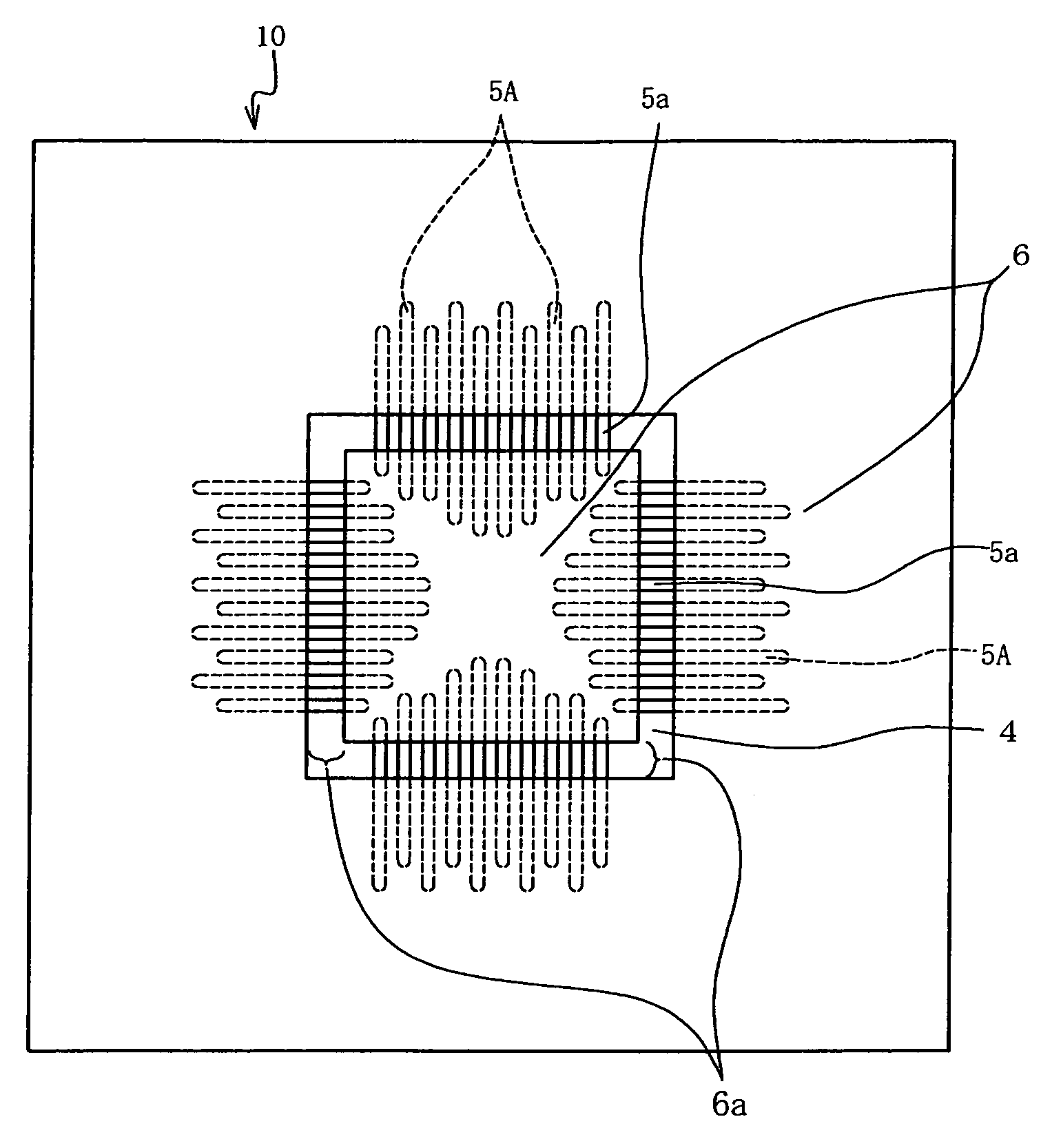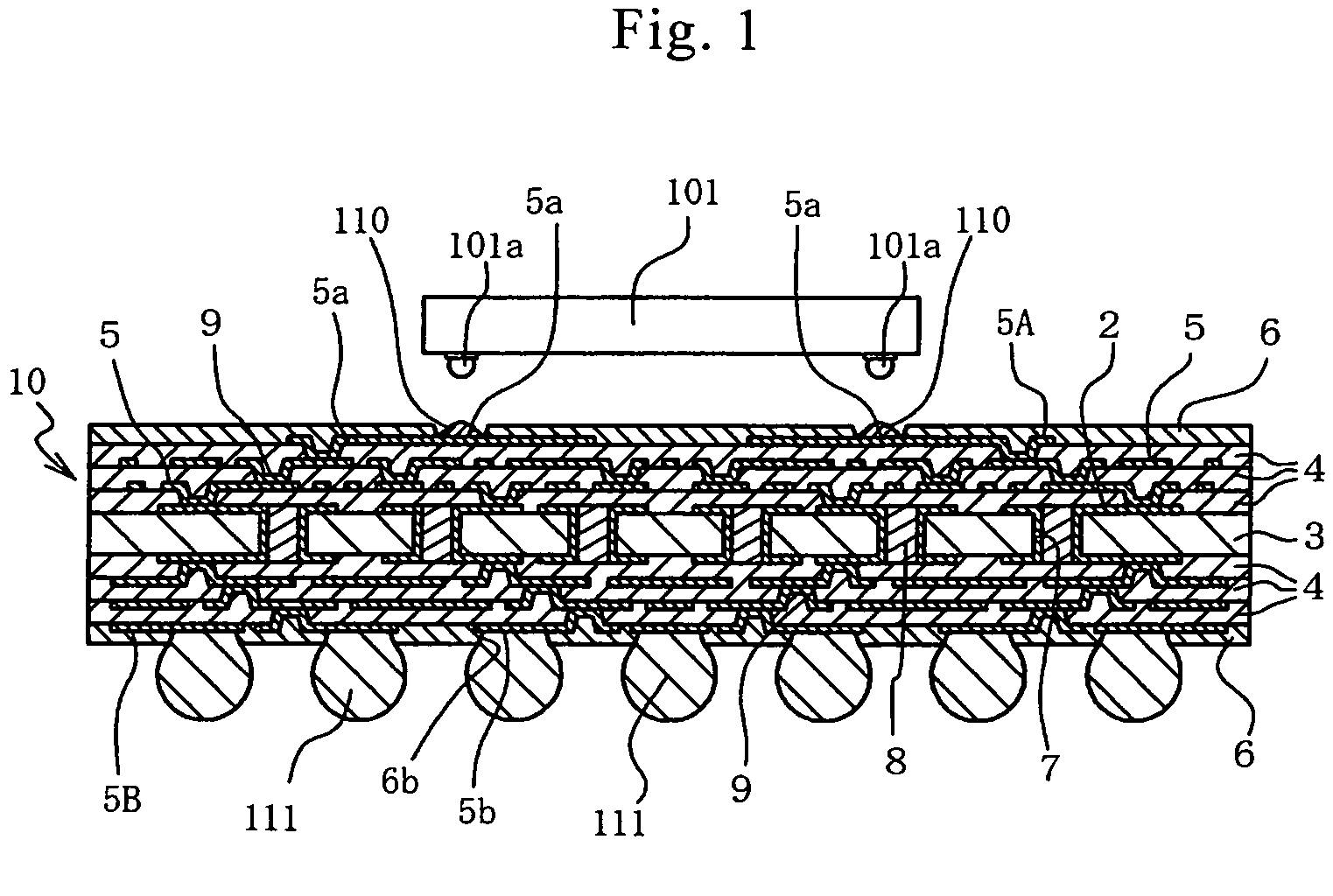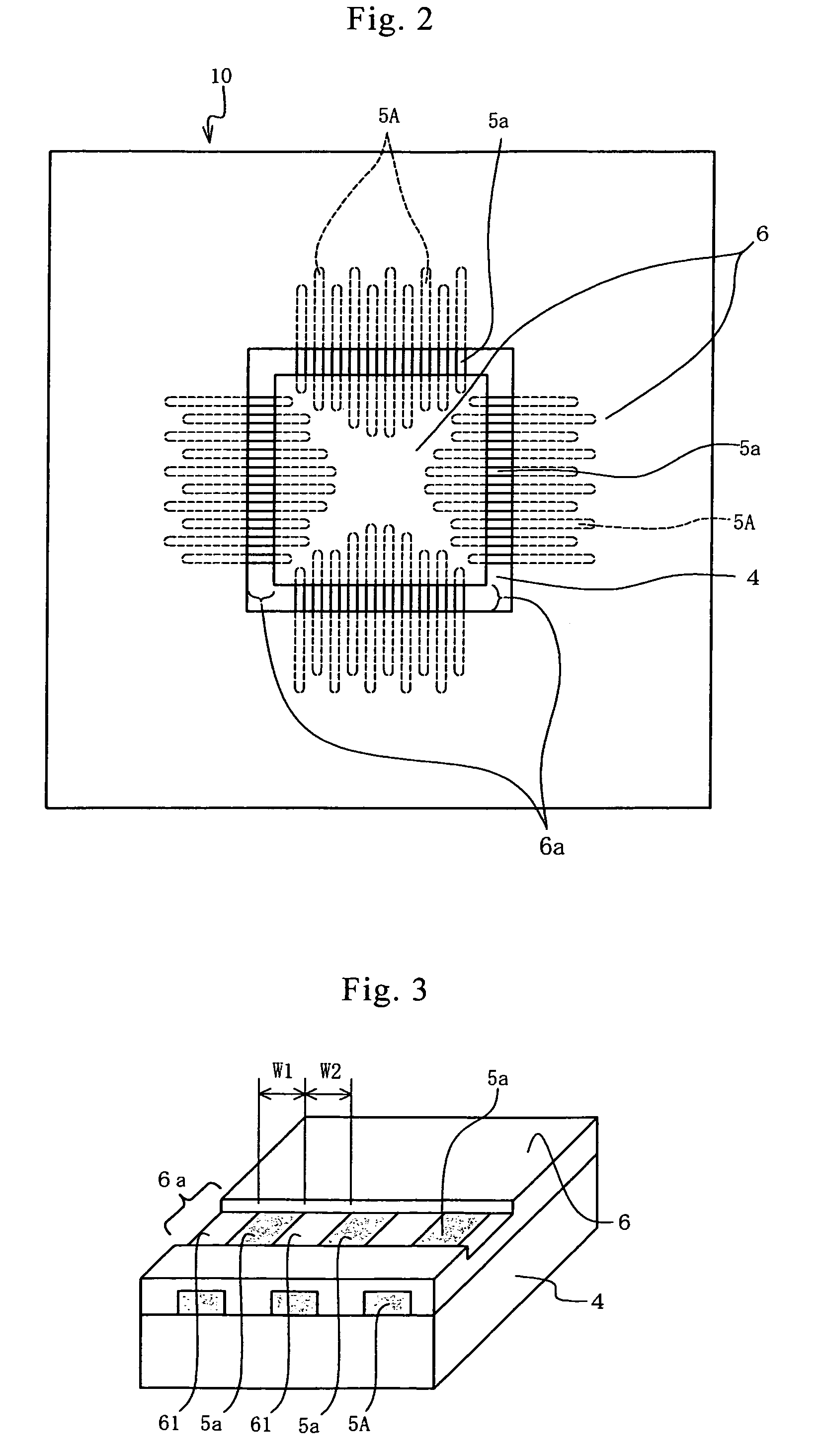Wiring board and manufacturing method thereof
a manufacturing method and wiring technology, applied in the direction of resist details, non-metallic protective coating application, synthetic resin layered products, etc., can solve the problems of complex manufacturing steps, electrical short circuit between adjacent connection pads, and inability to perform normal operation of mounted semiconductor integrated circuit elements, etc., to achieve excellent electrical connection reliability
- Summary
- Abstract
- Description
- Claims
- Application Information
AI Technical Summary
Benefits of technology
Problems solved by technology
Method used
Image
Examples
Embodiment Construction
[0042]A first preferred embodiment of the wiring board and the manufacturing method thereof according to the invention will be described in detail with reference to the accompanying drawings. As shown in FIGS. 1 and 2, a wiring board 10 of the present embodiment has a core insulation layer 3 provided with core wiring conductors 2 extending over the upper and lower surfaces of the core insulation layer 3. Buildup insulation layers 4 and buildup wiring conductors 5 are laminated alternately one upon another on the upper and lower surfaces of the core insulation layer 3. Protective solder resist layer 6 is deposited on the outermost surfaces of the laminate.
[0043]The core insulation layer 3 has a thickness of approximately 0.3 to 1.5 mm, and functions as the core material of a wiring board 10. For example, the core insulation layer 3 is composed of an electrically insulation material made by immersing thermosetting resin such as bismaleimide triazine resin or epoxy resin into a glass c...
PUM
| Property | Measurement | Unit |
|---|---|---|
| width | aaaaa | aaaaa |
| width W1 | aaaaa | aaaaa |
| thickness | aaaaa | aaaaa |
Abstract
Description
Claims
Application Information
 Login to View More
Login to View More - R&D
- Intellectual Property
- Life Sciences
- Materials
- Tech Scout
- Unparalleled Data Quality
- Higher Quality Content
- 60% Fewer Hallucinations
Browse by: Latest US Patents, China's latest patents, Technical Efficacy Thesaurus, Application Domain, Technology Topic, Popular Technical Reports.
© 2025 PatSnap. All rights reserved.Legal|Privacy policy|Modern Slavery Act Transparency Statement|Sitemap|About US| Contact US: help@patsnap.com



